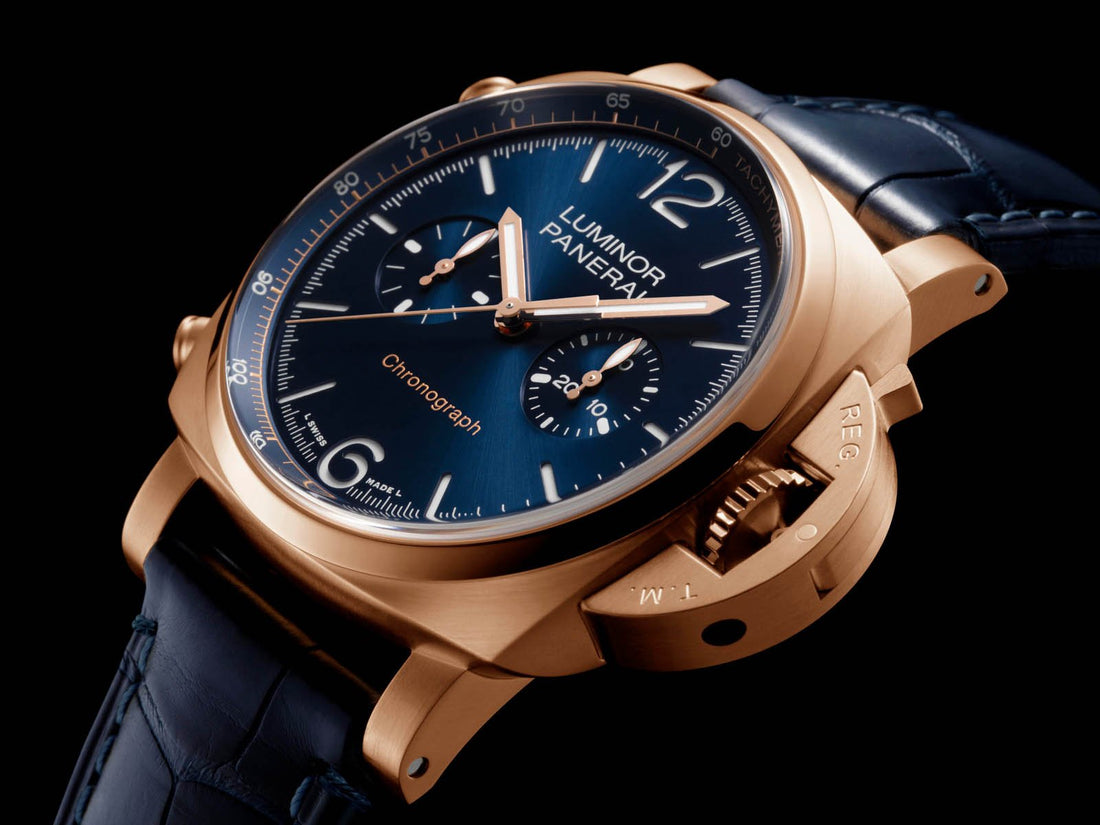
Panerai Using ETA Movements. Does it matter?
Share
Panerai has seemingly been using ETA movements. Perezcope has covered this in detail. It appears that Panerai’s claims to make in house movements are broadly in doubt. But, does this matter?
There are several factors at play when considering this. First, we must consider how Panerai markets its movements. Second, we must consider whether the movements are consistent with that marketing, or at least appear as such. Third, we must consider given Panerai’s price point whether this discussion matters.
Panerai’s advertising and media
Panerai creates the impression that its movements are in house. Panerai’s marketing materials do not explicitly state that the movements are from ETA or any other organization. By contrast, Panerai’s movement nomenclature implies that the movements are in house. For example, a movement called “P.900” appears to imply that it is in house
The most recent incident involves the P.9200 movement. Several influencers, and bloggers, have highlighted that the movement is not in house. Further, these same sources have indicated that Panerai created the impression that it was in hourse. This is either by failing to correct the record after it was reported as in house (or assumed to be such), or by some customer service agents indicating that it was “considered in house” (per a video on The Time Teller’s youtube channel). This creates the impression that Panerai was very happy to let consumers assume that the movement was in house.
The movements
Panerai’s movements appear not to be properly in house. People more expert than me have analyzed this in detail. Perezcope has thoroughly examined the movements. There appear to be several issues.
First, it appears that Panerai will use ETA movements. The P.9200 is an ETA movement with a chronograph module. This appears irrefutable based on the photographs of the movement and the ETA 2892-A2 stamp. The following photograph from Perezcope illustrates it clearly.

Source: Perezcope
Second, even where those movements might be slightly more in house, they appear to be Richemont group wide movements. These movements would not be in house to Panerai. A generous analogy would be Aston Martin using AMG engines. But, even then, that is unfair to Aston Martin, as Aston Martin provides additional engineering benefits. And, Aston Martin never claims the engines are anything other than AMG engines.
Thus, in many cases, it would not appear that the movements are in house per se, so much as Richemont wide and developed in Richemont’s mass production process.
Does this matter?
The natural follow-up is whether this debate over movements matters. After all, if outsourcing movements is perfectly fine, then the concern over whether they are in house is moot.
The answer to this is that Panerai prices itself at a point where in house movements are expected. Panerai usually does not command as much demand as Rolex. But, it has similar pricing. Panerai is more expensive than many Tudor, Omega, Breitling models.
Panerai must thus compete with Tudor, Omega, and Breitling on either materials, design or movements.
Design is subjective. So, we can leave that aside. My personal taste leans towards Omega or Breitling in this group. But, suffice to say, Panerai makes myriad variations on the same basic watch. A consistent design language is a plus. But, there is seemingly relatively little innovation to distinguish the different Panerai models.
The materials are not superior in a Panerai. All of Omega, Breitling, and Panerai offer a range of materials. This includes steel models through to gold models. One can argue that the gold Panerais skimp on gold. However, all do offer similar materials. Panerai does, however, seemingly charge more for similar materials.
The movements appear to be better in competing brands. For example, both Breitling and Omega develop in house movements. By contrast, Panerai seemingly does not. Thus, Panerai does a worse job than seemingly cheaper brands with respect to movements.
The movement difference is important. For a luxury time piece, buyers expect a level of personalized expertise. Buyers prefer to at least be able to pretent that their watch is not merely a conveyor belt commodity. One might argue that all but the most expensive watches are mass produced anyway, and it should not matter if it is mass produced at ETA or mass produced within the Panerai subsidiary itself. But, consumers who are paying these prices care.
The desire for in house movements might be purely sentimental. But, much like consumers prefer original paintings to reproductions, they expect unique craftsmanship. Indeed, this is likely only magnified in an increasingly impersonal world. Panerai must consider whether it is sustainable to mass produce watches and demand premium prices. Otherwise, Panerai will risk continuing to alienate its existing clients, and will push away new customers.